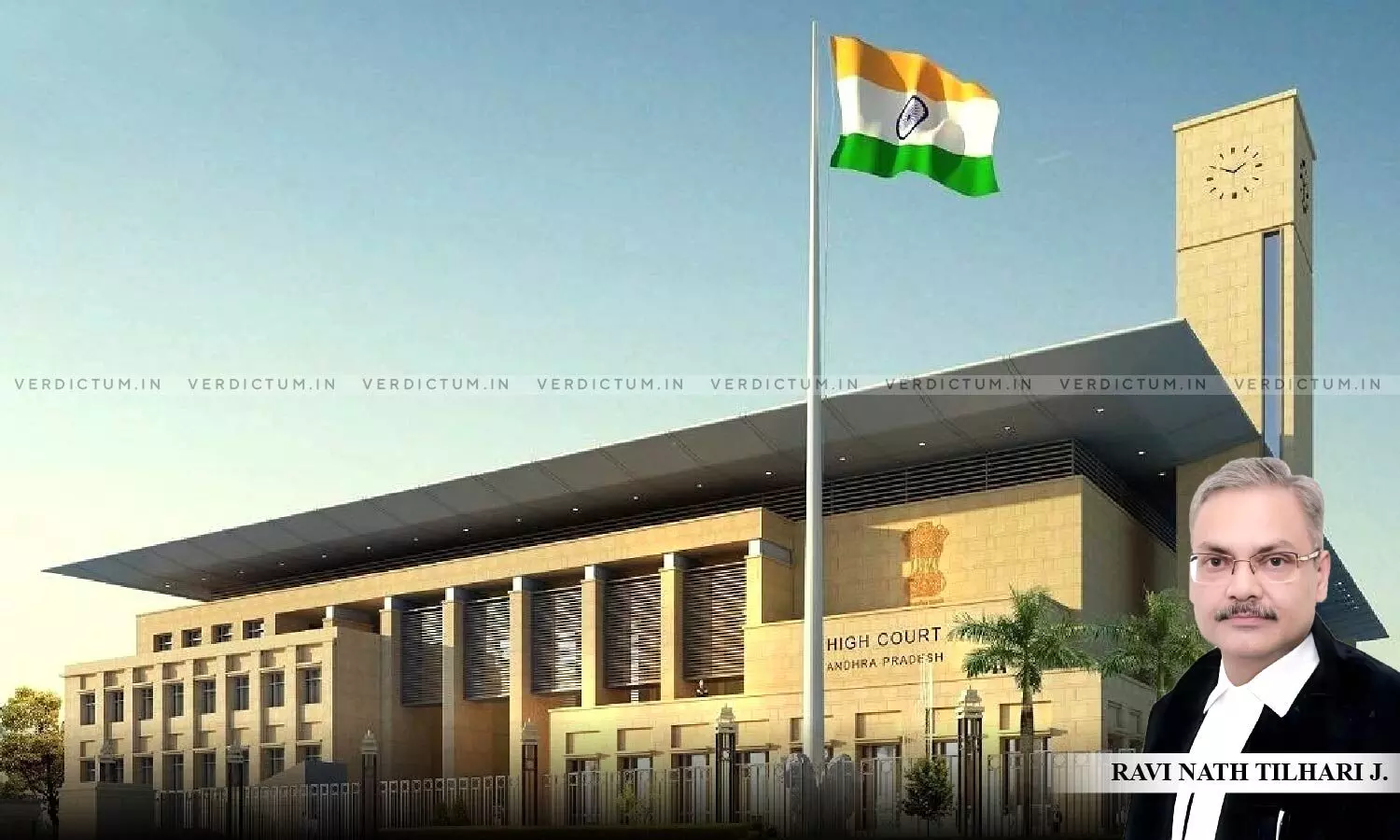< Back
High Courts

High Courts
Order XVIII Rule 17 CPC | Recalling Of Witness For Mere Marking Document Which Was Deposed By Him Cannot Be Seen As Filling Up Of Lacuna: Andhra Pradesh HC
 |
|20 March 2024 9:00 AM GMT
Recently, the Andhra Pradesh High Court upheld the trial Court decision which permitted the application seeking the recalling of witness for marking some document which was already deposed by him.
The bench of Justice Ravi Nath Tilhari observed, “it is not a case where the witness did not depose about the facts in his knowledge, at the time of filing of the chief affidavit. It was so deposed. The original "3‟ promissory notes were also marked as Exhibits A.1 to A.3. However, the endorsements on the back side of the "3‟ promissory notes could not be marked. So, it is not a case of filling up of lacuna by seeking to depose some thing which was not deposed in the affidavit.”
The Plaintiff, Garapati Vimala Rani, filed a case for a decree of recovery of the suit amount and award of interest etc., based on three demand promissory notes with pleadings that the defendants timely made endorsements, by paying small amounts towards repayment of debt, on the back of the promissory notes on different dates.
Later, Plaintiff/ Respondent filed an application to recall P.W.1, to mark the payment endorsements made by the defendants on the backside of the „3‟ promissory notes, supported by an affidavit pleading that due to overlooking the plaintiff‟s advocate could not mark those endorsements made by the defendants as exhibits.
The Petitioner, Dindi Veera Bhadra Rao with another, approached the High Court under Article 227 of the Constitution and filed this Civil Revision Petition after his objection against the application that the plaintiffs knew very well which documents were to be marked on her side and that as such the evidence could not be reopened and P.W.1 could not be recalled was rejected by the lower Court and it allowed the application of the Plaintiff.
Counsel for the Plaintiff, Advocate P. Srinivasulu contended that the endorsement was in the knowledge of the plaintiff and was on record. If that was not marked at the time of evidence of P.W.1, the application could not be allowed to fill the lacunae in evidence.
He further contended that the provisions of Order XVIII Rule 17 Code of Civil Procedure, (CPC) were not intended to be used to fill up omissions in the evidence of a witness who was already examined.
The High Court relied on the decision of the Supreme Court in Vadiraj Naggappa Vernekar (deceased) by L.Rs) vs. Sharad Chand Prabhakar Gogate and observed that “…provisions of Order XVIII Rule 17 CPC are not intended to be used to fill up omissions in the evidence of a witness who has already been examined. It was further held that the main purpose of the said rule is to enable the Court, while trying a suit, to clarify any doubts which it may have with regard to the evidence led by the parties. The Hon‟ble ApexCourt further held that the power under Order XVIII Rule 17 CPC is to be sparingly exercised and in appropriate case and not as a general rule. The Hon‟ble Apex Court further held that if the evidence on re-examination of a witness has a bearing on the ultimate decision of the suit, it is always within the discretion of the trial court to permit recall of such a witness for re-examination in chief with permission to the defendants to cross-examine the witness thereafter.”
The Court further observed in Vadiraj Naggappa Vernekar case, “the evidence which was sought to be introduced by recalling the witness in question, was available at the time when the affidavit of evidence of the witness was prepared and affirmed. It was not as if certain new facts had been discovered subsequently which were not within the knowledge of the applicant when the affidavit evidence was prepared.”
The High Court noted that the present case was not one where the witness did not depose about the facts in his knowledge, at the time of filing of the chief affidavit. It was deposed so. However, as per the Court, endorsements on the back side of the "3‟ promissory notes, which were already marked as exhibits, could not be marked. Therefore, the Court concluded that it was not a case of filling up a lacuna by seeking to depose something which was not deposed in the affidavit.
According to the Court, the trial court recorded in its order that the on-hand payment endorsements were already in the record and there was every possibility to forget in marking such payment that is human error.
Moreover, as per the Court, the trial Court noted that plaintiff did not seek to adduce the additional evidence but wanted to mark only such endorsements on original promissory notes already on record and exhibited as Ex.A.1 to A.3.
The Court agreed with the observation of the trial court that the petitioner’s reasons were genuine and they showed sufficient reasons for non-exhibiting of payment endorsement.
Accordingly, the Court dismissed the petition.
Cause Title: Dindi Veera Bhadra Rao v. Garapati Vimala Rani
Appearance:
Adv. P. Srinivasulu